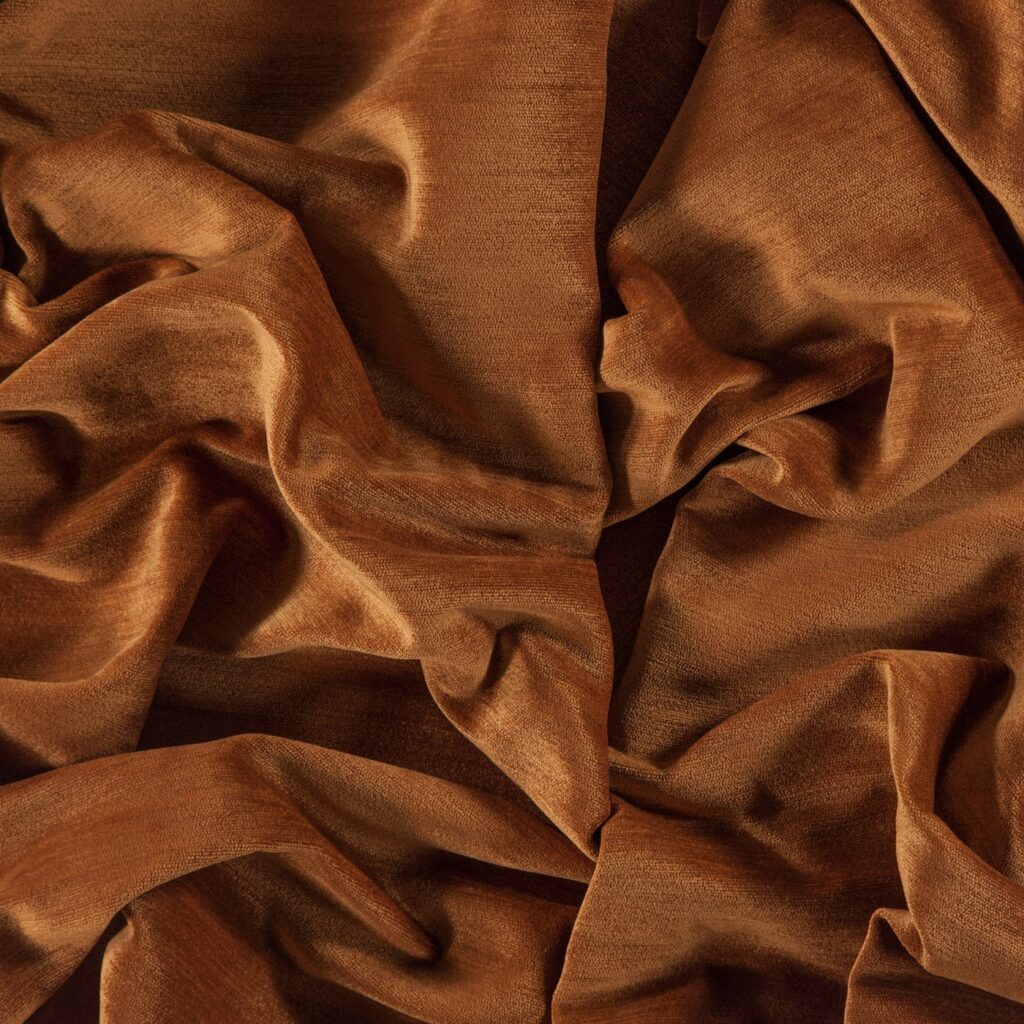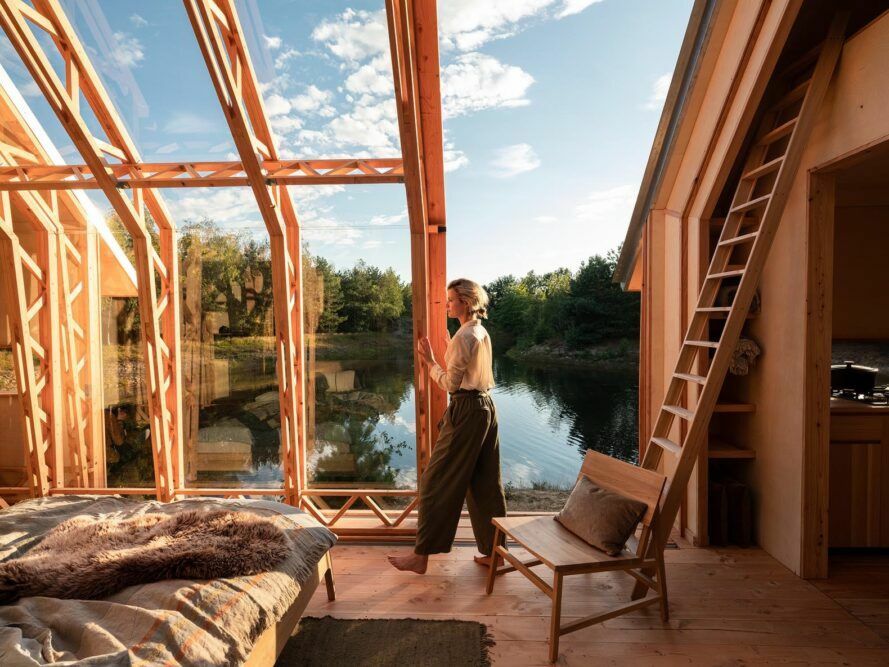Small is beautiful when it comes to sustainable design
There's no doubt the pandemic has made many of us reassess the way we see the world. Recent events have encouraged us to slow down and appreciate the simpler things in life. Our homes have come into sharp focus, and for many this has led to a search for a calmer, less stressful way of life.
With that in mind, issues of sustainability and 'conscious consumption' have never been more prevalent. 'Less is more' is the new mantra, as consumers actively consider how their purchases might impact the planet. For some, this has meant embracing the simplicity and energy efficiency of the 'tiny home' movement. For others, it has meant going even further and embracing off-grid living.
Related read: Vanlife: The perfect fabrics for life on the road >
At FibreGuard, sustainability is central to our philosophy and informs all the decisions we make regarding the manufacture of our stain-resistant fabrics. Here, we explore some of issues related to sustainable design for the home.
Sustainable design lies at the heart of our stain-free fabric technology
Sustainable design refers to a method of manufacture that makes as little impact as possible on the natural world. Here at FibreGuard, all our fabrics are OEKO-TEX® STANDARD 100 certified which means they meet stringent environmental standards relating to production, sustainability and ecology.
In addition, our soft, planet-friendly fabrics are highly durable. All our fabrics are built to last and the embedded stain-free technology means they can withstand the demands of family life over many years of wear. This approach aligns perfectly with the 'buy once, buy well' approach. Because, let's face it, buying less stuff is one of the easiest and most effective ways in which we can be kind to the environment.
Related read: Innovation, digital technology, and our need for a more sustainable textiles industry >
Designing smart homes with sustainable materials
The rise of the 'tiny house' movement, in which people choose to live in homes of less than 500 sq ft, shows no signs of slowing. More than half the people interviewed in a recent American survey said they would consider living in a tiny house. The most appealing factors revealed were affordability (65%), efficiency (57%) and eco-friendliness (48%).
It seems that downsizing is the ultimate way to make a sustainable lifestyle choice. Not only does a smaller home use less materials in its construction, it is also likely to be more energy efficient, consuming less power for heating and lighting.
Sustainable materials are also key to making tiny homes environmentally-friendly. Timber is the obvious choice here, with many owners of mini homes opting for FSC-certified woods which are renewable and sourced from responsibly-managed forests. Recycled steel can also be used as a planet-friendly building material, as can Enviroboards (fire-resistant boards made from agricultural waste or recycled paper) for lining walls and natural wool for insulation.
When it comes to decorating and furnishing your eco-friendly tiny house, it's best to choose low-VOC (Volatile Organic Compounds) paints and fabrics. FibreGuard's STANDARD 100 by OEKO-TEX® certification means that our fabrics are free of VOCs and don't contain any harmful substances. Not only that, many of our fabrics meet the Global Recycled Standard (GRS) which verifies their recycled polyester content.

Sophia and Henry Jungbauer in their 324-square-foot home in Duluth, Minnesota, USA

Eclipse, a tiny home and cottage construction company in Greenville, South Carolina, USA
In the case of Sophia Jungbauer's home, she and her husband were keen to live in a way that reflected their environmental concerns. They built their own, carefully designed tiny home in Minnesota stretching to a footprint of just 324 sq ft.
"Our main impetus in going tiny was to live more sustainably by reducing our energy consumption, curbing consumerism, and living a life that aligns with our values," says Sophia. "Over consumption is a huge contributor to environmental degradation and excess waste. As consumers, we have so much power in where we choose to spend our dollars."
Related read: The 3 things FibreGuard's social media audience love the most >
Sustainable energy: the essential element of any eco-friendly building
So, you've got the tiny house of your dreams, but how are you going to keep it warm in winter and cool in summer? The answer is, of course, sustainable energy. Conventional homes use up an enormous amount of energy, but with a smaller place there fewer rooms to heat and you can also incorporate eco-friendly power sources such as solar panels and wind turbines.
Solar PV (photovoltaics) systems are the obvious choice for sustainable homes. Solar panels fitted to the roof turn the sun's energy into electricity, working efficiently even on cloudy days. A rainwater recycling system can also be installed to save water, and 'grey' water (the waste water from baths, showers and washing machines) can be treated and reused.

A soft, luxurious bouclé upholstery from FibreGuard - even white or neutral furniture is safe thanks to our Stain Free Technology.

This bouclé upholstery from FibreGuard, seen here in down-to-earth tones.
The award-winning ANNA prefab cabin, created by Dutch designer Caspar Schols, is made from entirely natural materials, including sustainable Siberian larch wood and birch plywood.
The innovative design allows different sections of the cabin to be slid apart on rollers, depending on the weather. The cabin is perfect for off-grid living because it can be shipped to almost anywhere in Europe, where it can be fitted out with a fire-heated boiler, a solar energy system and a water waste treatment system.

Another option for proponents of sustainability is to build a home based on passive house design principles. These buildings are highly insulated and rely on 'passive' influences on the building such as sunshine, shading and ventilation rather than active, energy-consuming heating and cooling systems. When it comes to truly sustainable living, this has to be the dream.
Your ally for responsible design: our high performance furnishing fabrics
Our luxurious, highly durable fabrics are the perfect partner for a sustainable home, however big or small it may be. Available in a wide range of textures and colours, FibreGuard fabrics are stylish as well as family friendly because of their stain-resistant properties. Add to that our eco credentials and you've got a fabric match made in heaven.